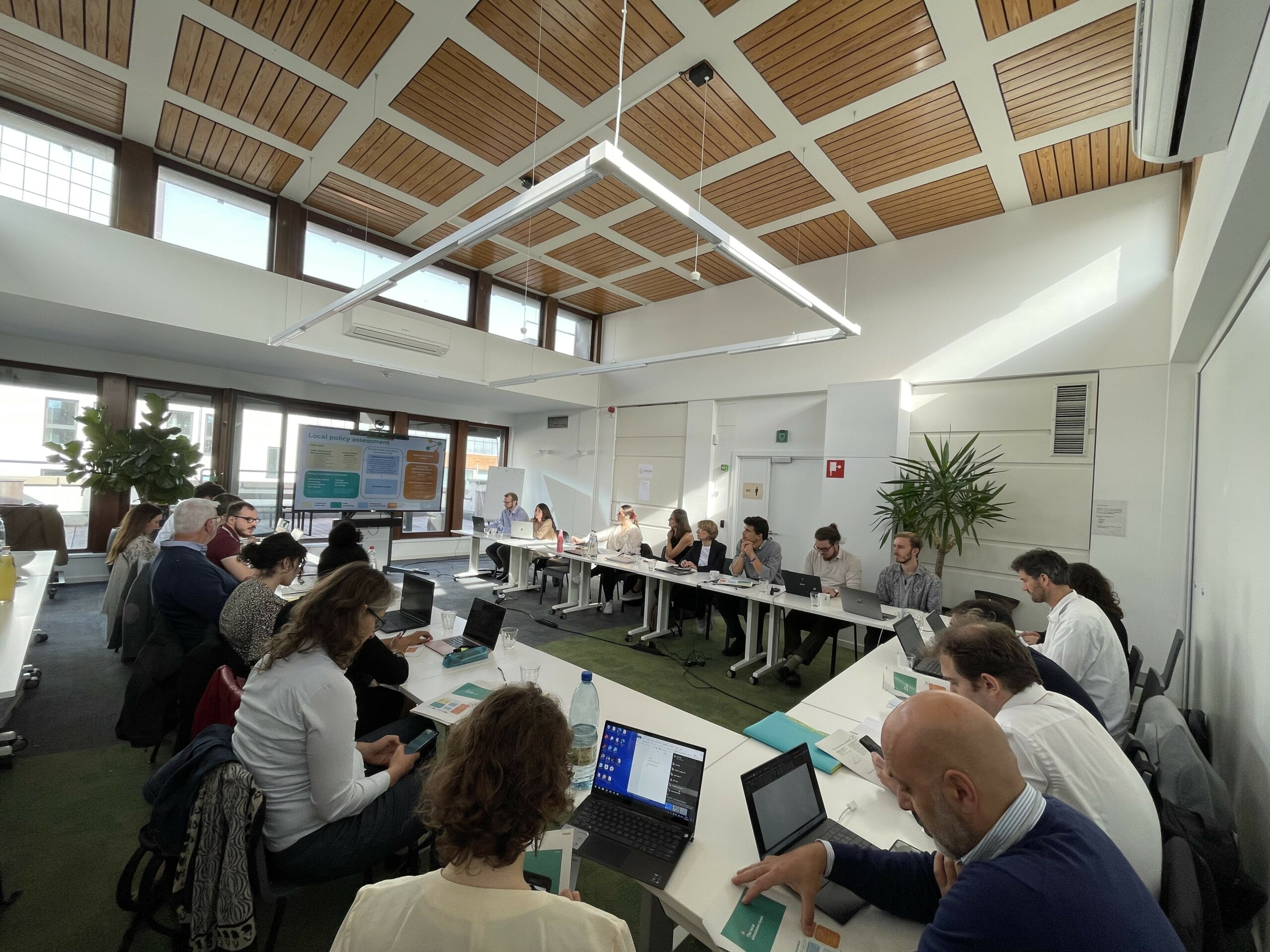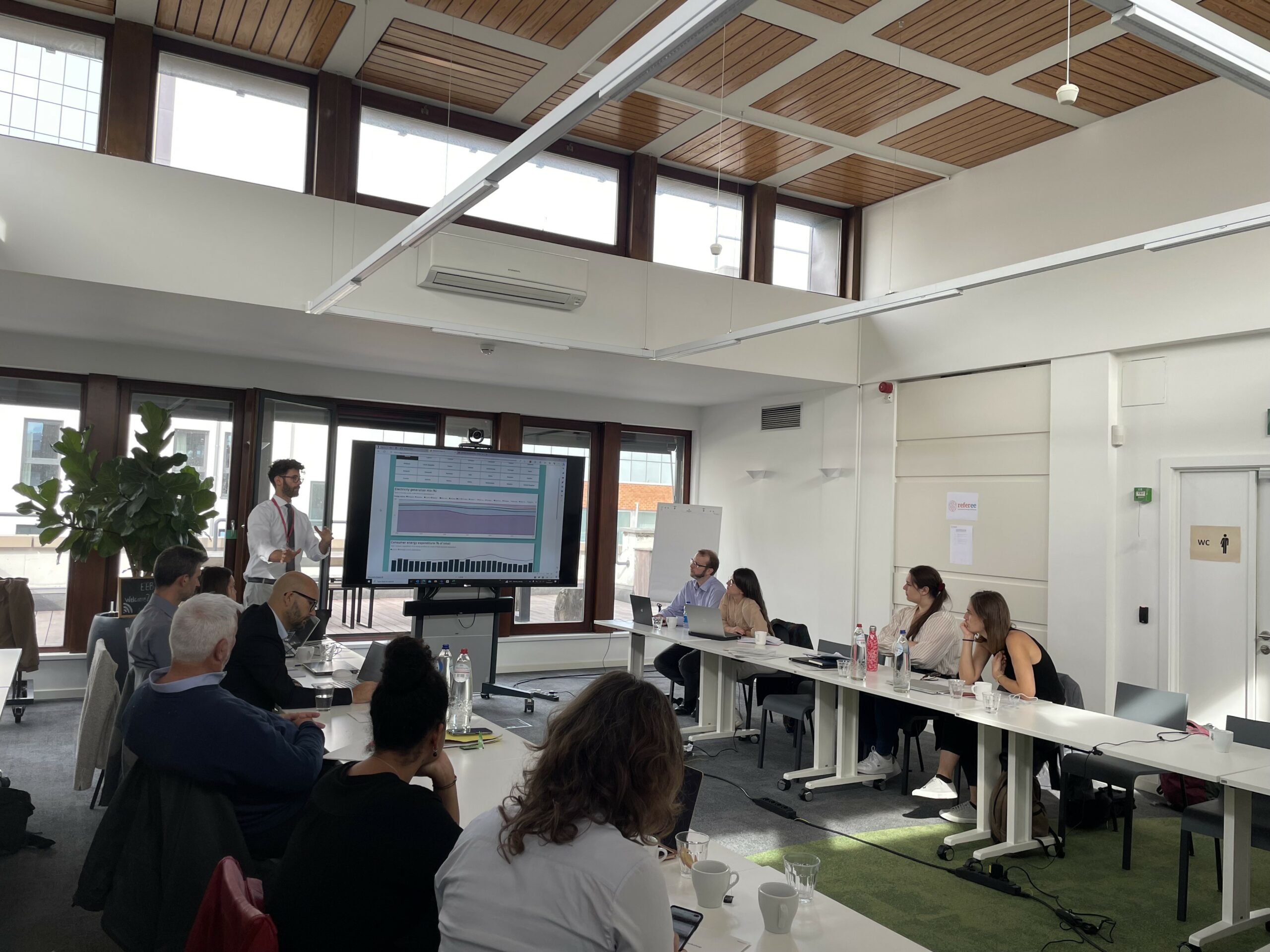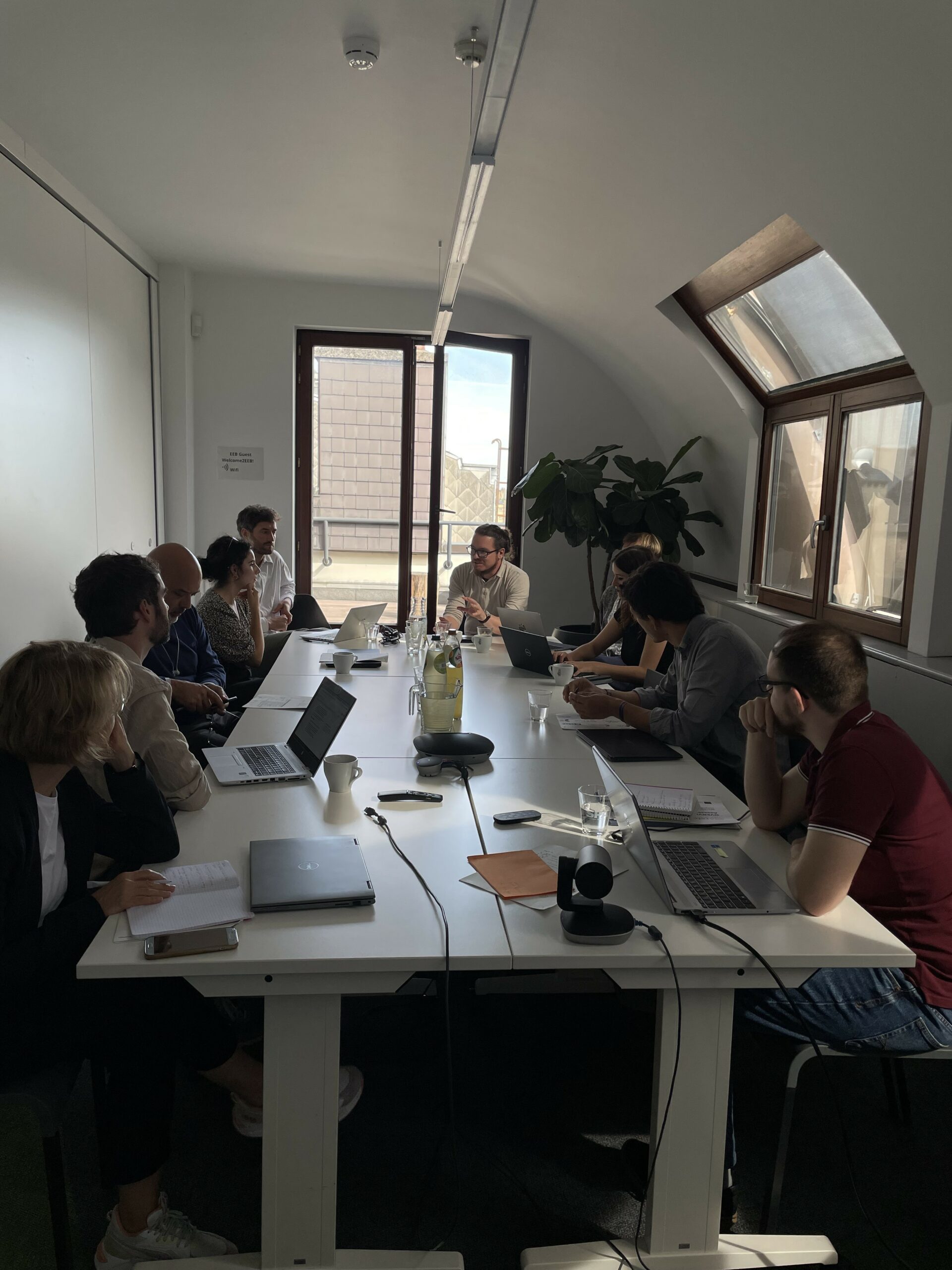The Fourth REFEREE Policy Advisory Group meeting was held on September 19th, 2023 in Brussels at the European Environmental Bureau headquarters. This in-person meeting brought together policymakers, members of the advisory group, and other stakeholders to discuss advancements in the REFEREE Tool.
Introduction and overview of the policy assessment tool

After a short introduction from project coordinator Stefano Faberi (ISINNOVA), the consortium moved to a presentation of the REFEREE Tool as it currently stands and highlighted recent developments made to the interface in the previous months.
The tool is divided into the national level (led by Cambridge Econometrics) and local level (led by Mcrit). lMembers of the consortium also displayed a newly-developed guidance section that provides some contextual information on the national tool.As suggested by participants, there may also be a video tutorial or more extensive guidelines developed at a later stage, including for the local level.
Jon Stenning (CE – Cambridge Econometrics) then presented the national tool model, which is still in the process of finalisation. He used a brief demo to show that users can name the policy package, then specify the policy inputs and provide details to calculate the multiple benefits of a given energy efficiency measure. For instance, intensity can be set at30% to model a 30% reduction in heat pump costs).
This was followed by a presentation from Isaac Farradellas (MCRIT) on the local tool. The demo used a municipal example to explain initial inputs on the tool. He gave examples of policy measures for each sector. An example for “housing” can be refurbishment of building façades and for “tertiary” more efficient air conditioning in offices and stores.
Questions from participants dealt with the modeling itself, such as which data sources were used by the model. They also discussed the capacities of the tool, including taking into account changes in energy demand and the possibility to assess impacts of policies on different income levels. The relevance of the tool over time was also addressed, with questions about the time range of the policy packages as well as about future updates of the model based on policy developments and the evolution of carbon prices.
After these presentations, the meeting moved into deep dive sessions, where participants were guided step-by-step through the process of using the tool and going through the results, and were then offered the opportunity to directly ask clarifying questions. The deep dive sessions were split in two: one for the national case studies, led by Cambridge Econometrics, and one for the local case studies, led by MCRIT.
Deep dive session on national case studies
The discussion around the national case studies was full of curiosity and ambitious ideas. Participants specifically noted how crucial the choice of a reference scenario is in the calculation of results. They also expressed interest in the use of potential results at an EU policy level, and outlined the importance of guidance when using the tool to ensure the basic assumptions of the model are well understood from the get-go.

Deep dive session on local case studies
During this fruitful discussion, some initial impressions and suggestions were made, including how to better estimate energy consumption effects that target consumer behavior. Participants also emphasized how important this tool is for nourishing local expertise in energy efficiency benefits and how it could be integrated within a wider toolkit for energy efficiency policy planning at regional and local levels.

Plenary and closing words
The meeting wrapped up with a plenary session where participants shared a variety of useful suggestions for the finalisation of the tool and to improve ownership (e.g. thanks to a video tutorial). It is clear that the REFEREE tool will be very useful in the encouragement and implementation of energy efficiency measures at the local, national, and European levels.

Leave A Comment